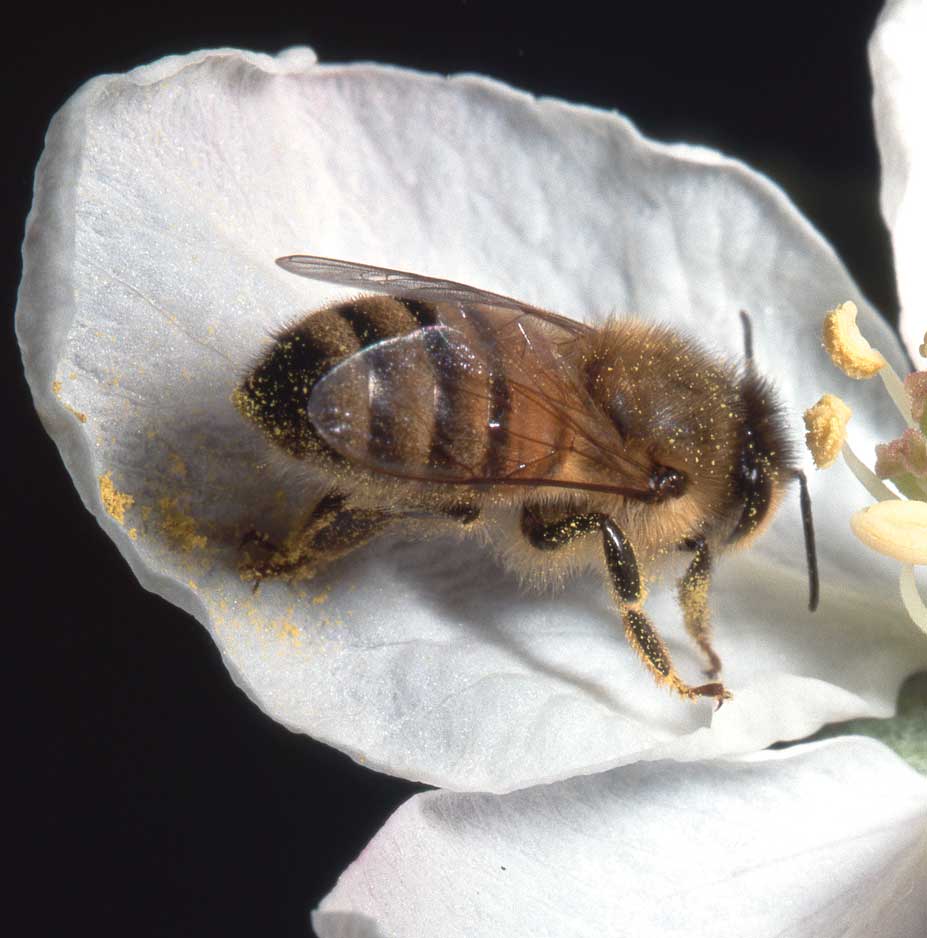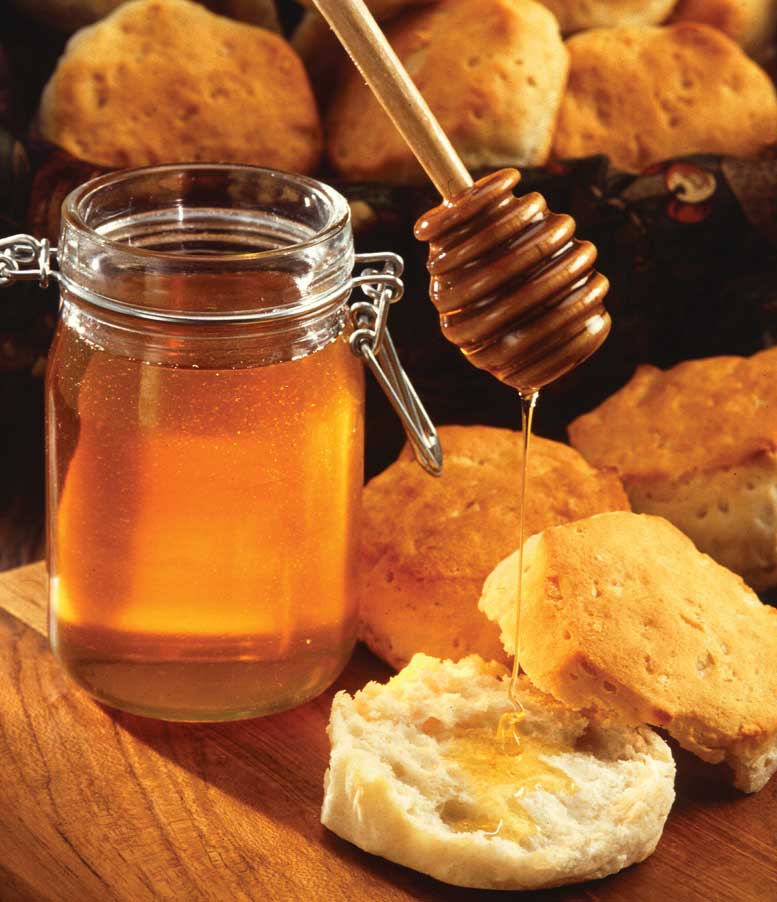
Figure 137. Bees provide an important agricultural industry for North Dakota. Bees carry out pollination of North Dakota crops like sunflowers and canola, as well as fruit trees and garden vegetables. (USDA)

Figure 138. Beehives are a common sight across the North Dakota landscape. North Dakota leads the nation in the production of honey produced by bees—more than 37 million pounds each year. (Neil Howe)
Bees are extremely important to North Dakota agriculture. Without the help of these small, flying insects, many kinds of plants would not be able to survive. Bees are pollinators (PAHL-in-ay-ters).
PollenA powder produced by certain plants and must be carried from plant to plant in order for the plant to reproduce is a powder produced by flowering plants and must be carried from plant to plant in order for the plant to reproduce. When bees land on a flower, pollen sticks to their legs. Some of this pollen falls off when they land on another flower. In this way, pollen is carried from one flower to another. This process is called pollination.• Process of pollen being carried from one flower to another
• Carried out when pollen sticks to the legs of bees and other insects
Flowering crops such as sunflowers, safflower, canola, and flax need to be pollinated. Alfalfa and sweet clover are hay crops that need bees for pollination. Fruit trees, many types of vegetables, garden flowers, and wild flowers all depend on bees to transport pollen.
Besides pollination, bees have another important job—making honey. The mouth of a bee is equipped with a very long, hollow tongue called a proboscis (pro-BOSS-is). Using its proboscis like a drinking straw, the bee sips nectar from a flower. Nectar• A sweet liquid produced by flowers
• Used by bees to make honey is a sweet liquid produced by flowers. The bee stores this nectar in a special pouch called the “honey stomach.” Then the bee moves on to another flower.
After visiting 50 to 100 flowers, the bee returns to the hive with the nectar she has collected. Other bees take this nectar and begin the process of making honey. The nectar from about 2,000 flowers results in approximately one tablespoon of honey.
Honey production is a significant industry in North Dakota. In fact, North Dakota produces more honey than does any other state. Each year, about 37.8 million pounds of honey come from the beehives of North Dakota.
Sweet Facts about Honeybees
Each hive contains three kinds of honeybees
-
Queen
- Only one per hive
- Largest bee in the hive
- The mother of all the bees in the hive
- May lay 1,500 eggs per day
-
Worker bees
- 60,000 to 80,000 in each hive
- Smallest bees in the hive
- Fly about 15 miles per hour
- All are females
- Obtain nectar from flowers
- Bring nectar to the hive
- Build the honeycombs (6-sided cells used to store honey)
- Make honey from nectar
- Keep the hive clean
- Feed the queen, the drones, and the young
- Keep hive temperature at about 95º F.
- Guard the hive by stinging trespassers (unwelcome visitors)
- Die after stinging an animal or human
-
Drones
- Male bees
- Helpless—must be fed by worker bees
- Defenseless—no stinger
- Mate with queen bee and then die
- Up to 200 drones in each hive during the summer
- All die in the fall after being kicked out of the hive by worker bees

Figure 139. Honey is a healthful food that can be substituted for sugar. Honey can be used fresh or in baked goods or as a sweetener for tea and soft drinks. (USDA)


